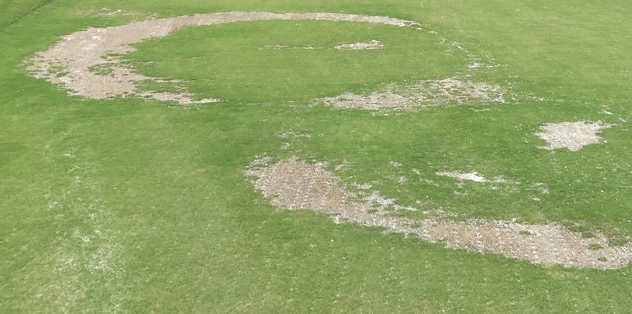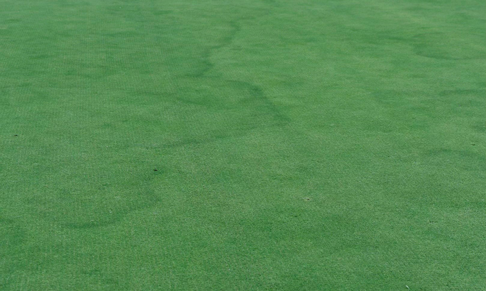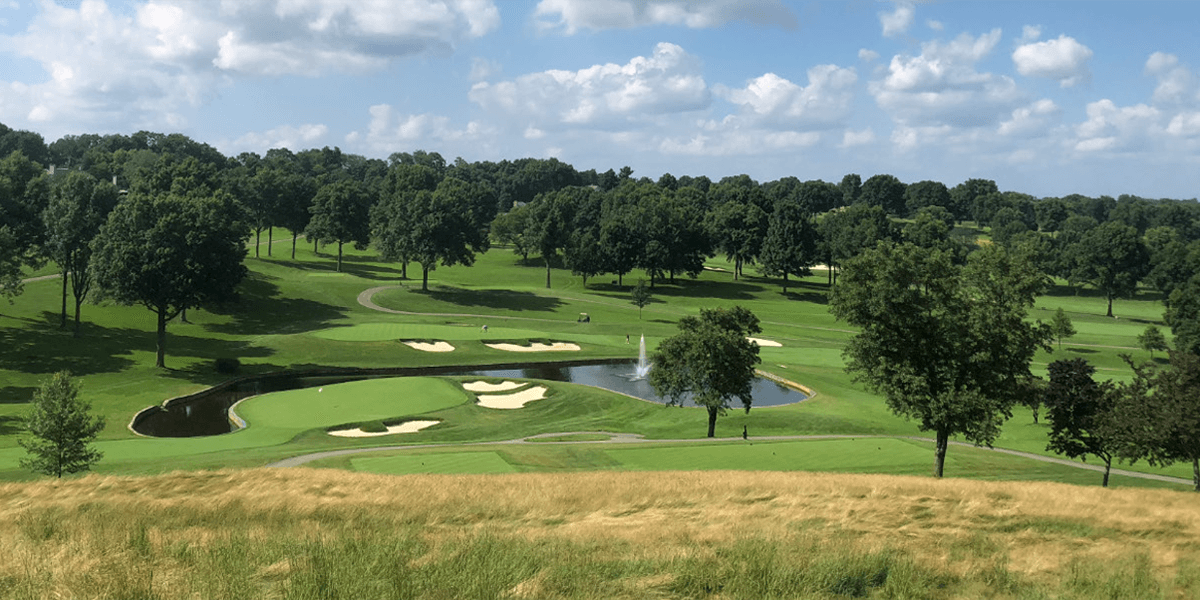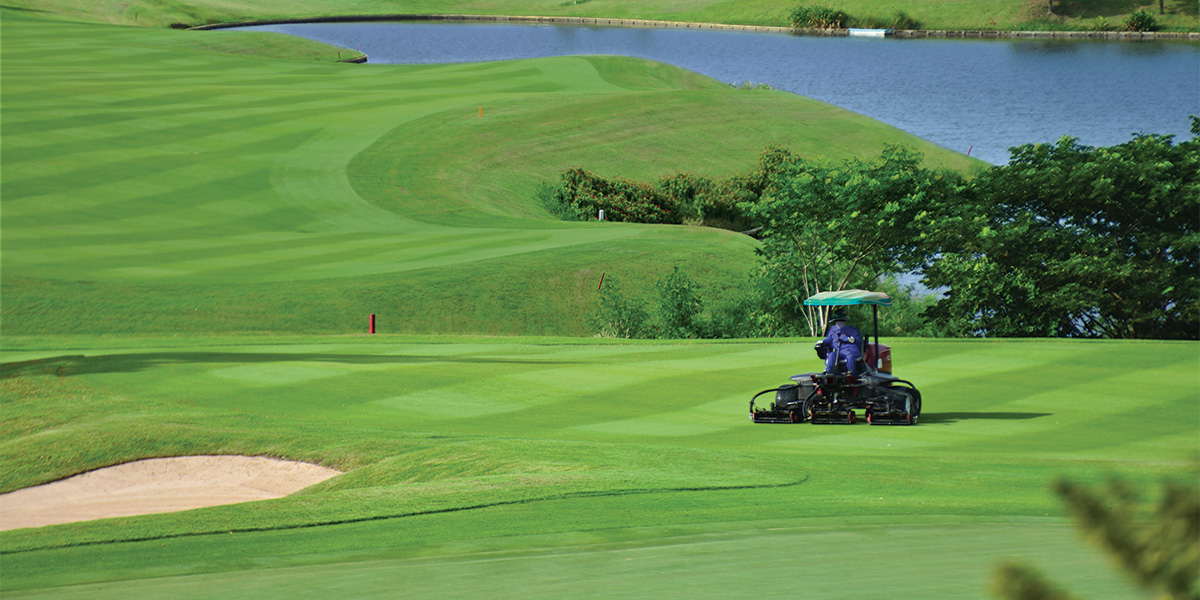Universal Answers
Fairy ring can emerge on warm- and cool-season turf. Fortunately, there are well-rounded tactics to finding solutions for control.
Few turfgrass diseases disregard regional boundaries like fairy ring. Bermudagrass or bentgrass. Paspalum or Poa annua. Zoysiagrass or ryegrass. Consider this one case where the warm- and cool-season divide
doesn’t exist. “We see them in all grasses,” says Clemson University turfgrass pathology professor emeritus Dr. Bruce Martin. “Grasses are really less important than soil conditions and environment. We
see them everywhere.” Finally, a disease story for everybody who manages golf turf! Seriously, though, fairy ring presents universal challenges for superintendents and their teams.
Martin annually co-presented a national seminar with fellow turfgrass research legend Dr. Bruce Clarke of Rutgers University. The pair always surveyed attendees about their top five disease challenges. Fairy ring always made the list. And fairy ring frustrations aren’t limited to one golf-abundant nation. “They can occur everywhere, and they are a big problem worldwide,” Martin says. “They would probably be in that top five anywhere you go around the world.” Now that we have established a far-reaching audience, let’s delve into specifics.
WHAT CONDITIONS MAKE TURF SUSCEPTIBLE TO FAIRY RING?
When Martin has reviewed fairy ring literature published in the last 50 years, he frequently encounters two words: POOR SOILS. In the case of fairy ring, those poor soils can be confused with what many believe are optimal conditions for greens drainage and playability.
"Sandy soils are inherently low-fertility and they are more susceptible to drought stress,” Martin says. “And part of the problem with fairy rings is the drought stress they induce in greens, in particular.”
Martin adds that low-fertility, sandy soils also make fairways and sports turf susceptible to fairy ring.
So, does this penchant for dry conditions associated with sand mean clay soils are fairy ring-free zones? Sorry, cultivators of turf atop clay. Your course might not be exempt from fairy ring.
“Generally, low-water holding capacity or proneness to drought stress would be a couple of common denominators,” Martin says. “But we see them at times in heavy soils — heavy meaning soils that have clay and loam and all of that. It’s not that they don’t occur in those soils, but they are more frequent in those sandy soils and relatively more important and harder to manage in them.”
WHEN CAN IT OCCUR?
Think short-sleeve weather. “We usually see fairy ring pop up in spring and early summer, once soil temperatures are consistently above 55 degrees,” says BASF technical representative Dr. Emma Lookabaugh. “Further south into places like Florida, we can see it pop up almost year-round.”
WHAT SHOULD A SUPERINTENDENT BE SCOUTING FOR?
For starters, Martin recommends starting a mapping program for greens. Similar to spring dead spot (What the Fungal, September 2020), fairy ring can reappear at the same places, even if it had been successfully controlled the previous year.
Don’t have your greens disease mapped? Then start looking for discolored green rings, which can be noticed as soon as early March in the transition zone. “You might see a little bit of greening and you can see the green rings even in semi-dormant turf,” Martin says. “And you can see them in growing bentgrass also. That’s going to be a sure thing the fungus is there, especially if those green areas are growing in arcs or rings.”
WHAT CAN BE DONE BEFORE FUNGICIDES ARE USED?
Basics such as regular aerification and topdressing are part of any solid disease management program. Regular wetting agent usage is also critical to fairy ring control.
“One, they help drive your fungicides a little deeper,” Lookabaugh says. “But then they also help re-wet hydrophobic soil conditions or localized dry spots associated with fairy ring fungi.”
WHAT SHOULD BE CONSIDERED WHEN ESTABLISHING A SPRAY PROGRAM?
Environmental conditions and site-specific disease history are benchmarks for establishing effective spray programs. With fairy ring, the line between preventive and curative control can be blurry.
“A lot of people tend to be more reactive when they have fairy ring and start treating when they see green rings and discolored turf,” Lookabaugh says. “If you wait to apply fungicides until after you see symptoms, it can take time and multiple fungicide applications to bring fairy ring back into check. This is especially true in situations with necrotic rings and dead turf, because at that point, you are in a recovery phase and are trying to stimulate turf to regrow.”
Staying ahead of fairy ring means closely monitoring soil temperatures. Spoiler: Get ready to see a familiar number. “We usually trigger preventive applications when soil temperatures are consistently above 55 degrees. For some areas, like south Florida, timing preventive applications can be tricky because temperatures rarely get low enough,” Lookabaugh says. “Make repeat applications on a 28-day interval as long as conditions favor disease development. In some cases, two to three well-timed fungicide applications can provide season long control but in other cases, additional applications are needed. In south Florida, you need to build in fairy ring prevention almost year-round.”
WHAT ABOUT FUNGICIDE SELECTION?
DMI fungicides have proven success against fairy ring, but historically turf safety concerns have limited their utility for summer fairy ring applications. Maxtima® fungicide and Navicon® Intrinsic® brand fungicide provide two new, summer-safe DMI entries into fairy ring fungicide rotation programs, Lookabaugh says.
"Maxtima fungicide and Navicon Intrinsic brand fungicide bring advanced turf safety to the table,” she adds. “Superintendents can feel confident using these products in the heat of summer, 95 degrees and up even with PGRs in the tank, and not worry about injuring or thinning turf.”
Insignia® SC Intrinsic® brand fungicide, Honor® Intrinsic® brand fungicide, Xzemplar® fungicide, and Lexicon® Intrinsic® brand fungicide are other BASF fungicides that provide effective control of fairy ring when used properly, Martin says.
“We demonstrated years ago those were great fairy ring products when they are tank mixed with a soil wetting agent,” he adds. “That combination of the cultural practices and the characteristics with the fungicides has led to some pretty nice programs. The other thing to remember: the fungicides don’t control just fairy ring, even though we are watering those in thoroughly for fairy ring. We’re also going to get activity for other diseases like take-all root rot and even dollar spot, because some of those are translocated back through the turf to control foliar disease.”
WHAT HAPPENS WHEN FAIRY RING ISN’T PROPERLY CONTROLLED?
Falling behind on fairy ring control leads to a lengthy recovery process.
“You’ll be looking at it for a long time,” Martin says. “Once they bust out on the greens, it’s a long road to get them under control. It usually takes a couple of months. Folks would put down an application of an effective fungicide and then call back after a week or two weeks and say, ‘Hey, nothing has changed.’ I’d say, ‘You’re not going to see anything change for a couple more weeks. Be patient.’ That’s why the preventive programs have been so popular, because they have by and large done a good job of putting fairy ring at least in a manageable light.”
Always read and follow label directions. Honor, Intrinsic, Insignia, Xzemplar, Lexicon, Maxtima and Navicon are registered trademarks of BASF.
© 2021 BASF Corporation. All rights reserved
Note: Any sales of the products after registration is obtained shall be solely on the basis of the EPA-approved label, and any claims regarding product safety and efficacy shall be addressed solely by the label.





